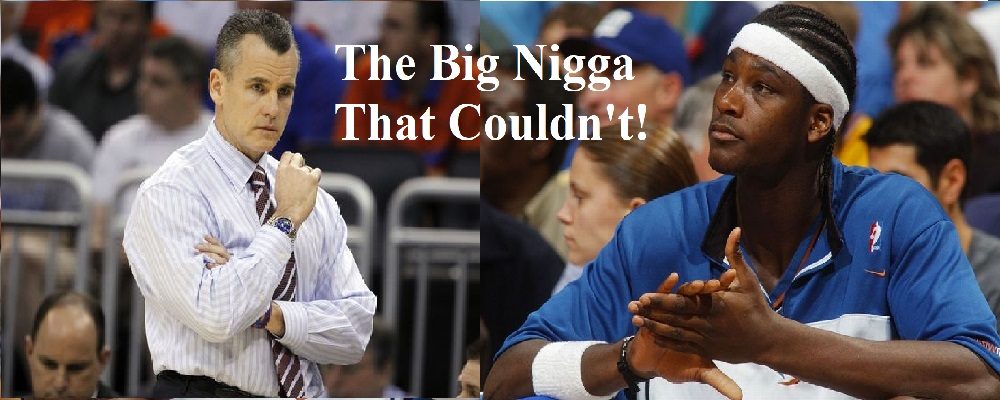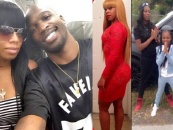
The Real Story Of Kwame Brown And How He Became The Number 1 Draft Pick In The NBA!
by Tj Sotomayor March 15, 2022 0 commentsThe Big Nigga That Couldn’t!
By: Tommy “Tj” Sotomayor
Boys Among Men: When Kwame Brown made a bold promise to MJ
In 1995, the Washington Bullets had the opportunity to select Kevin Garnett with the fourth overall pick in the NBA draft. They bypassed the stringy teenager, largely because the team’s owner, Abe Pollin, did not want to draft a high school player out of principle. Six years later, the league and Pollin had drastically shifted on the allowance of high school players into the league. The Bullets, by then the Wizards, took Kwame Brown with the top overall pick in the 2001 draft.
Brown was the hand-picked choice of Michael Jordan, the team’s executive, who was on the verge of making a comeback to the court. Garnett, Kobe Bryant and Tracy McGrady all had to wait to hear their names summoned on draft night. It was Brown who became the first high schooler selected with the No. 1 overall pick, but his transition into professionalism proved bumpy and external factors continually stunted his on-court growth.
The following is an excerpt adapted from “Boys Among Men” Copyright © 2016 by Jonathan Abrams. Published by Crown Archetype/Penguin Random House LLC.
BILLY DONOVAN SENSED the hesitation in the voice of his prized recruit. Donovan had once been an NBA player, although briefly, and appreciated the forces that the elite amateur players now faced. Donovan coached at the University of Florida and had quickly lifted the program to great heights. The NBA’s lure began chipping away at his talent and now Kwame Brown, in the spring of 2001, had just informed Donovan that he would forsake his commitment to the Gators to become a professional. To Donovan, Brown sounded as though he were trying to convince himself of the decision and not Donovan.
“I understand,” Donovan said.
Donovan had watched Brown the previous couple of years. The two shared a close relationship, ever since an acquaintance informed Donovan about this 6-foot-11-inch sophomore out in Brunswick, Georgia. Most leads like that proved to be false. Donovan, more curious than anything, went to see Brown and left impressed. He offered him a scholarship soon after and, in November 2000, Brown signed his letter of intent with Florida. He possessed an innocence about him that Donovan enjoyed. He was a sweet kid, Donovan thought, a positive trait just about anywhere else, other than in a high-level athlete. In that capacity, a mean streak was often required for success. To Donovan, Brown was a high schooler with high school problems. Brown concerned himself with the prom and his grades — not about fast-tracking his way to fame and fortune.
Donovan took notice when more and more NBA personnel began popping up at Brown’s games at Glynn Academy. In the crowd, the logos of various NBA teams could not be missed. Brown’s stock among NBA personnel slowly began to rise and then skyrocketed. He was projected as a late first-round pick, then a middle rounder. Donovan had scouted Brown for so long that he was keenly aware of his many positive attributes. He was also aware of his flaws and how he could overcome his weaknesses. His body seemed designed for the NBA. His game was all power and athleticism. Donovan felt that he could not argue with Brown’s decision. He had a future to secure and a family to uplift. What kid in his situation could walk away from a guaranteed fortune?
“Coach, I don’t want to do this,” Brown confided in Donovan shortly after informing him of his choice. When Donovan asked why, Brown responded: “If I’m the number one player taken, I know the expectations. I’m so far away from being the number one pick. I’m not ready for this.”
In recalling the conversation, Donovan said he felt sorry that Brown shouldered such a burden. “In his heart of hearts, he really wanted to come to college,” Donovan recalled. “I think he knew he was not ready. He had to go. He was really doing it for his family. But he was really concerned about the little stuff.” He asked Donovan whether he had to live by himself if he went to the NBA and how he should have his dry cleaning done. “That’s one extreme to the next,” said Donovan, who more than a decade later would leave the college ranks to coach in the NBA for the Oklahoma City Thunder.
Joyce Brown wanted her son to attend college. But her family needed positivity in their lives almost as much as the financial boost her son’s declaration would provide. Kwame Brown was born in Charleston, South Carolina, as the seventh of eight children to Willie James and Joyce Brown. For years, Joyce Brown tried leaving the damaging relationship she had with her husband. He abused drugs and physically and emotionally abused her. No one was spared whenever his sudden, violent mood swings occurred. The cycle was destructive. Yet, he was always able to lure her back until, one day, Joyce Brown left for good and returned to her hometown of Brunswick. She finalized the divorce in 1989. A year later, Willie James Brown was confined to life in prison without parole after being convicted of the murder of his girlfriend with an ax handle.
Brunswick, a port city of about 15,000, is located between Jacksonville and Savannah. The family lived in an area called Dixville and nicknamed “The Bottom.” They had nowhere to go but up. The neighborhood teemed with churches and bars. Most months of the year, the humidity made it impossible to step outside and remain sweat-free for more than a couple of minutes. Brunswick housed many of the service providers to the nearby Golden Isles, a group of four barrier islands where the rich sometimes vacationed and lived. Joyce Brown cleaned hotel rooms at the Brunswick Days Inn before going on disability in 1993 with a degenerative disk in her back. She supplemented her disability checks with babysitting gigs. A bicycle served as the family’s main means of transportation. Brown’s older brothers compensated for the family’s poverty by turning to crime. Willie James Brown Jr. drew a 12-and-a-half-year sentence for selling crack cocaine. Tolbert Lee Brown was convicted of a shooting for which he was sentenced to a 15-year stint in state prison.
“In his heart of hearts, he really wanted to come to college. I think he knew he was not ready. … He was really doing it for his family.”
Billy Donovan
The family tried insulating Brown from the despair. His older brothers would tell him to walk away. He was bused to an elementary school outside of Dixville. When Dan Moore contemplated accepting Glynn Academy’s coaching job, he watched some of the middle schoolers run up and down the court one day. Upon seeing Kwame, who was already about 6 feet 5 inches tall, Moore agreed to the job. Brown’s brother, Tabari, already starred for the team and Moore envisioned a pipeline of talented Brown players for years to come.
Kwame Brown, Moore found, could occasionally get upset quickly. As a freshman, he grew frustrated at one practice, punched a wall, and broke his hand. He also had problems being on time. Brown was occasionally late to practices or to the bus for away games. On those occasions, Moore would signal the driver to leave without his star player. Overall, though, Kwame was a joy for Moore to coach. He was articulate and smart. He was willing to learn. Moore sometimes even asked Brown to babysit his boys. Looking back, Moore could not recall one time they had engaged in an argument. Plus, Brown was so athletic that Moore had to design new drills to challenge him. One involved Brown jumping from outside the key on one block to the opposite block, while contesting shots. Still, nobody could successfully score over Brown. He was growing into a well-rounded player and a stable individual, aided by the mentorship provided by John Williams.
Williams served as the associate director of a nearby youth ministry and his involvement with the basketball program predated Moore’s arrival. He occasionally gave the kids motivational talks and helped find them part-time jobs. For Brown, Williams filled a gaping void. He was one of the first male influences Brown came across without an ulterior motive. While Tyson Chandler drove around in his flashy SUV, Brown steered Williams’s Buick Century. Williams made a promise to Brown that he would lend him the car if he maintained high marks in school. Brown averaged 20.1 points, 13.3 rebounds, and 5.8 blocks as a senior, guiding Glynn Academy to the state’s Final Four tournament. He had 17 points, 7 rebounds, and 5 blocked shots at the McDonald’s All-American Game. Brown had previously performed at some of the sneaker camps and played decently. On that national stage at Cameron Indoor Stadium in Durham, North Carolina, he starred and for the first time began seriously contemplating jumping straight to the NBA.
Moore did not weigh in on Brown’s decision. He did not believe it was his place to be involved. Brown was a teenager and Moore preferred him to remain one as long as he could. As NBA personnel filtered into his gym throughout the season, Moore kept Brown insulated from them all. “Use basketball,” he would tell Brown. “Don’t let basketball use you.” Moore believed that Brown would attend Florida until the day Brown informed Billy Donovan of his decision. Moore later accepted and rationalized the decision. “When he would be twenty-one years old, he would already be making nineteen million dollars,” Moore said. “When I was twenty-one, I was looking for a job.”
Brown allowed Williams to act as his facilitator. Brown himself ducked most of the interview requests and questions about his future. Brown announced his NBA intentions with a statement. “There are those who would say that the transition from high school to the NBA will be a difficult one,” it read. “To those people, I say that difficult transitions are not new to my family and me. In fact, adversities have made my family stronger.” Clad in a black suit and vest, Brown attended his high school’s prom with his girlfriend, Joy, hours after issuing the press release.
He purchased a home in Gainesville near Billy Donovan and asked to prepare for the draft at the University of Florida. Donovan took one look at Brown and knew he was not in the best of shape. In Donovan’s opinion, Brown loved to play basketball, but he did not seem to enjoy working out. “Kwame, you’re going to have to get in a lot better shape,” Donovan advised him. “You’re going to have to push yourself more.” Donovan no longer had any stake in Brown’s future. He still wanted to help, yet he predicted that Brown was headed into a make-or-break situation unprepared.
The training helped. Brown performed for all the teams with the top picks and impressed at each stop. Eddy Curry was bigger. Chandler was longer. Brown was the best combination of the two and possibly the best athlete of the three. Michael Jordan worked out Brown, Chandler, and Curry on separate occasions. Jordan sometimes shared the workouts, personally testing their skills and fueling interest that he harbored an ulterior motive in wanting to work himself into shape for a comeback attempt. As the draft approached, the Wizards requested one last workout that would feature Brown against Chandler. The request initially irked Brown. He felt he had already proved himself worthy of the top selection.
Brown was relentless against Chandler in the showdown. He powered through Chandler in some of the drills. He was faster than him in others. He could and did do it all — outmuscling Chandler in the post and skillfully maneuvering by him on the perimeter. Brown, Rod Higgins thought, could play inside and outside and possibly develop into another Kevin Garnett. Too often, Chandler floated out to the perimeter in the workout. He told Higgins that he wanted to play like Rasheed Wallace, a tall inside-outside forward with a pure stroke. But Higgins doubted that Chandler’s NBA future would be in that capacity. Higgins thought of his own NBA career. He had entered the NBA in 1982 after graduating from Fresno State. He knew that he would have never been prepared for the NBA fresh out of high school, but this was a new wave of players. It was tough, Higgins thought. The executives had to project where players would be five years into the future with a teenager now often harboring inflated expectations of his NBA career. To Higgins, that represented a guessing game that was part of the game’s beauty and curse.
Chandler did not know it, but the Wizards had scheduled the workout to confirm their conviction to draft Brown. Chandler possessed a sinking feeling once it ended. He had a brief conversation with Jordan and realized he was no longer in the running to be the top selection. Brown also talked to Jordan before departing, making a bold proclamation that piqued the competitor in Jordan. It was one a younger Jordan might have made had he been granted a similar stage. “I promise you if you draft me,” Brown said confidentially, “you will never regret it.”
Jonathan Abrams has covered the NBA for the Los Angeles Times, The New York Times and Grantland.






No Comments so far
Jump into a conversationNo Comments Yet!
You can be the one to start a conversation.Only registered users can comment.